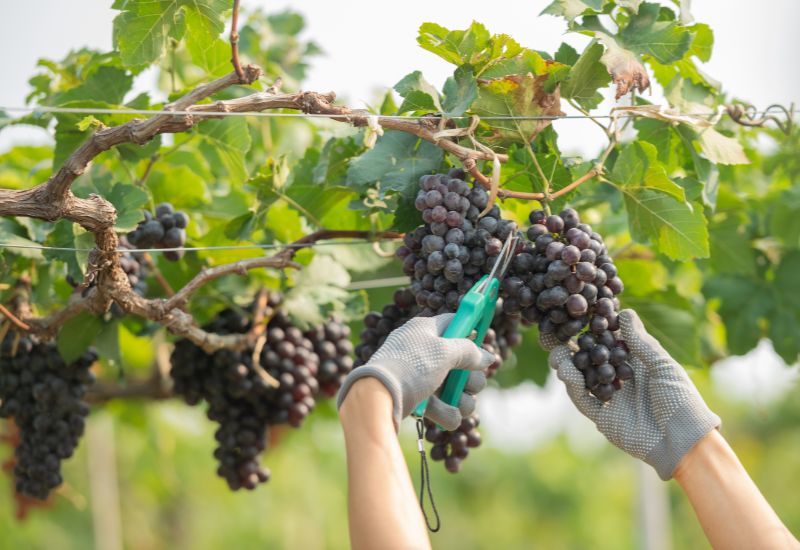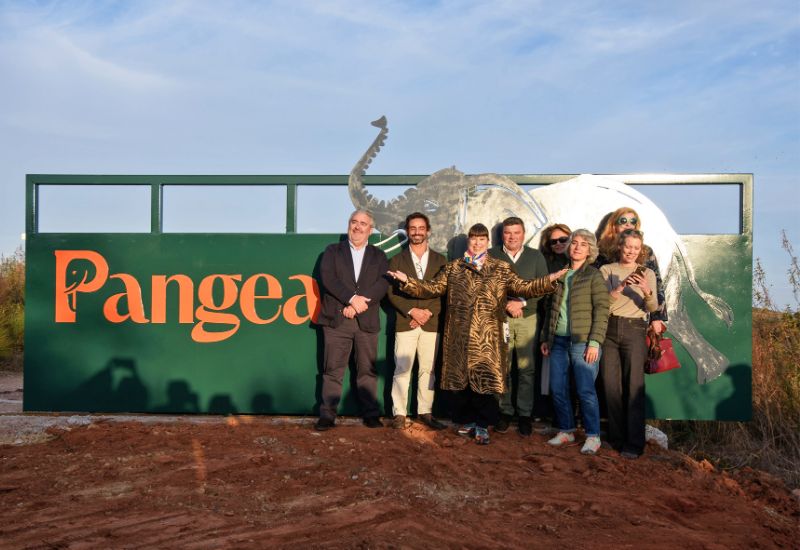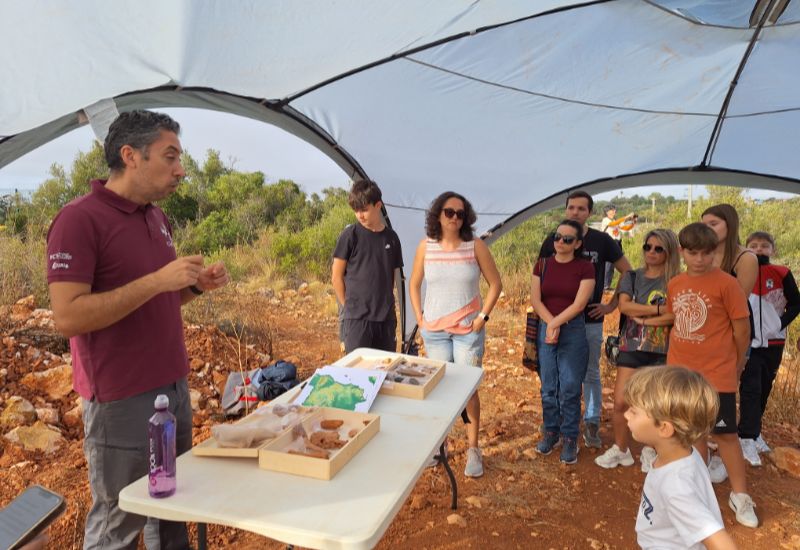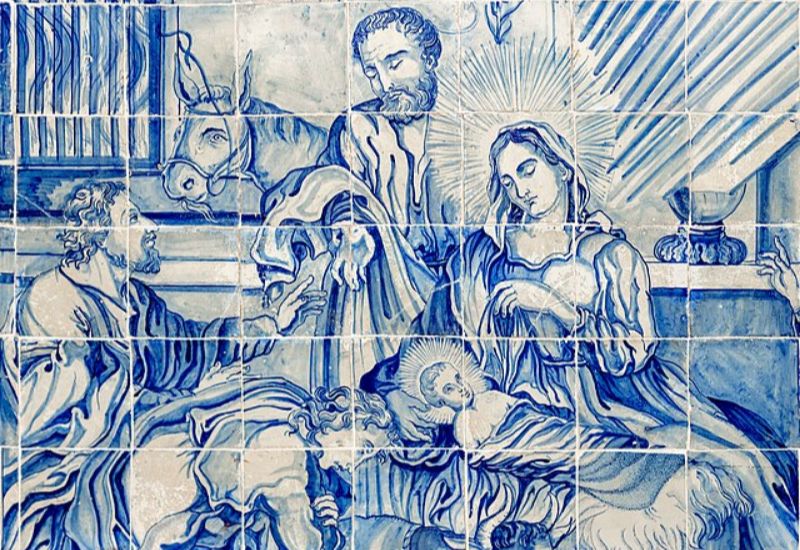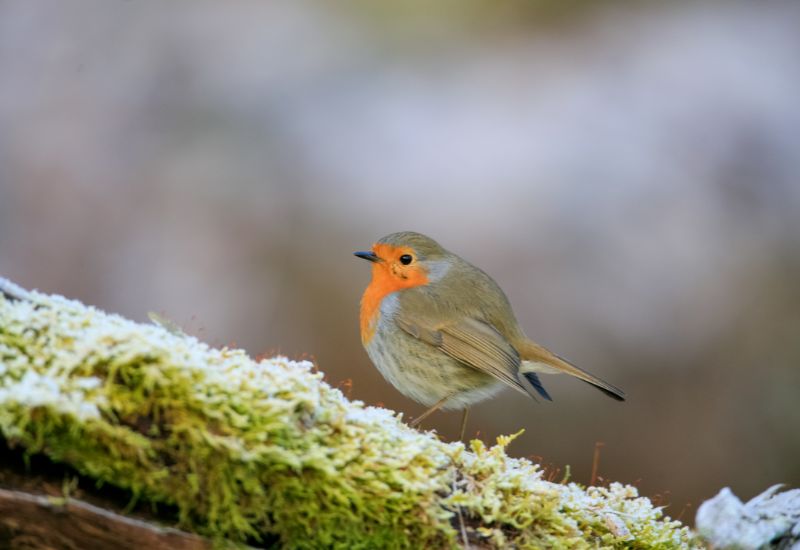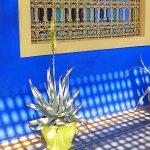From our own experience, we all know that each passing year differs from the last, sometimes wildly so. For nature and vines specifically, it’s exactly the same. The incredible result of each year’s harvest depends on every single weather change, decision, thought and action that happens from the moment the vines are picked the previous year to the very instant they’re picked for the current harvest.
Here are just a few of the many elements that make each year unique:
Weather patterns
This includes the timing, duration and intensity of rain from vine dormancy forward, the potential threats of an early “false spring” followed by “nail biting frost”, hail, and prolonged cold weather into spring and early summer. The intensity of heat during the vines’ most prolific growing stage matters and there is the nerve-wracking question of whether rain will arrive just as harvesting is planned, potentially delaying picking.
Pruning decisions
The timing and method of winter pruning, as well as pruning throughout the year, are critical, essentially laying the foundation for the vine’s future growth and fruit production.
Vineyard treatments
The choice and frequency of fertilisers, sprays, composts or field preparations applied to the vines during dormancy through to when they are in full splendour play a significant role in the quality of the year’s-end fruit.
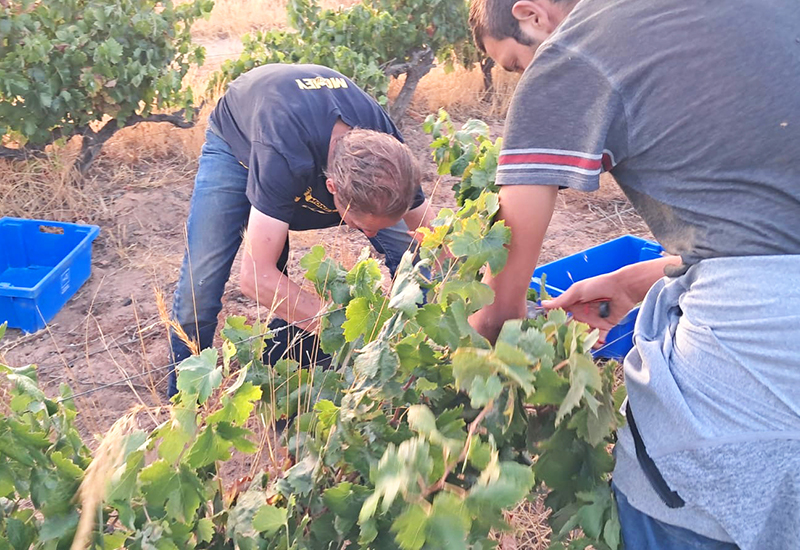
Soil management
Decisions about using less machinery to maintain the rows and cultivating cover crops to prevent soil compaction and enhance biodiversity are vital, as is the timing for seeding these rows.
Canopy management
Strategic choices regarding green harvesting (removing unripe grape bunches), cutting back the canopy, or leaf pulling, and the precise timing of these actions, are essential for managing ripeness, airflow, and sun exposure.
Water monitoring
Traditionally, listening to and monitoring the photosynthesis occurring in the vines will determine if they need water or using cutting-edge methods, like subterranean water monitoring stations, to help encourage health and vigour in the vines.
Here in Portugal, the harvest typically occurs between the end of July and mid-October, with regional variations and the decisions of the owners dictating the exact timing. The pivotal decision to pick occurs ideally when the grapes reach the peak of their phenolic ripeness, along with optimal sugar and acidity levels. Each grape varietal or plot is harvested precisely according to its maturation levels and the desired profile for the wine it is destined to become.
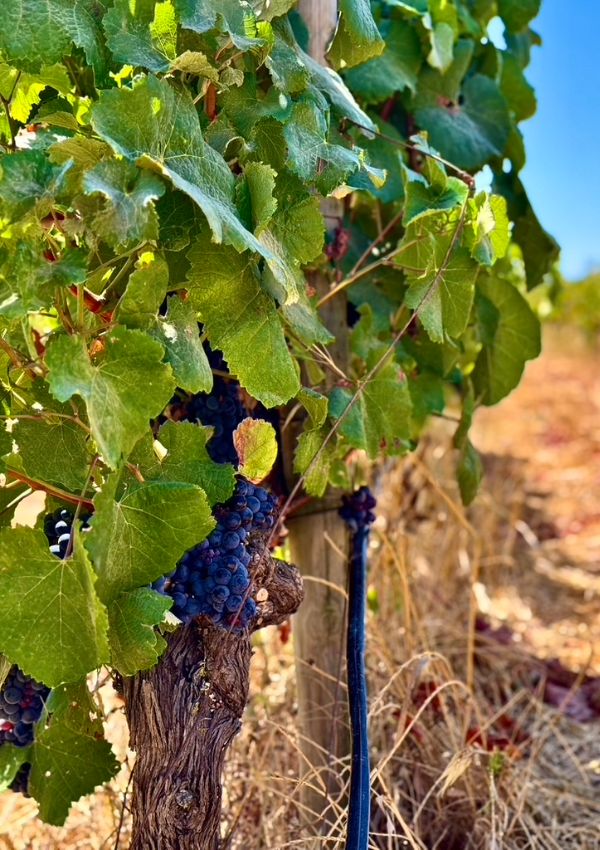
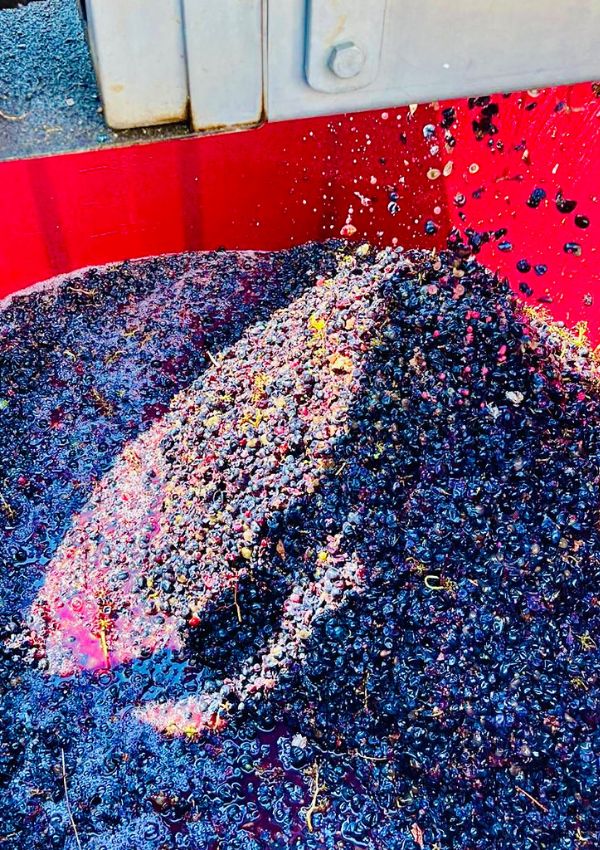
The heartbeat of the harvest: local winemakers speak
Every adega or winery in the world becomes a hive of activity during this time, buzzing with extra staff, palpable energy and, yes, a fair share of stress! To get a clearer picture of this year’s harvest across the Algarve, I decided to go straight to the source. I reached out to a few prolific agriculturists and viticulturists I know, who also happen to be incredibly talented winemakers!
The panel of amazing and generous experts I consulted includes:
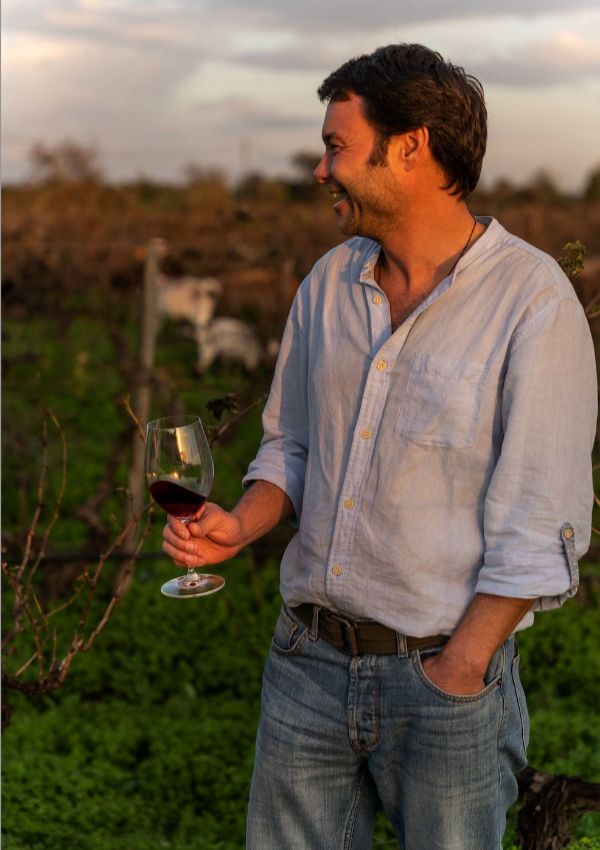
Joaquim Imaginário, a distinguished viticulturist/vineyard manager and resident technician of winemaking and vineyard manager of Morgado do Quintão, and also a consultant for Morgado do Reguengo. He oversees an impressive 53 hectares of vineyards stretching from Lagoa to Portimão.
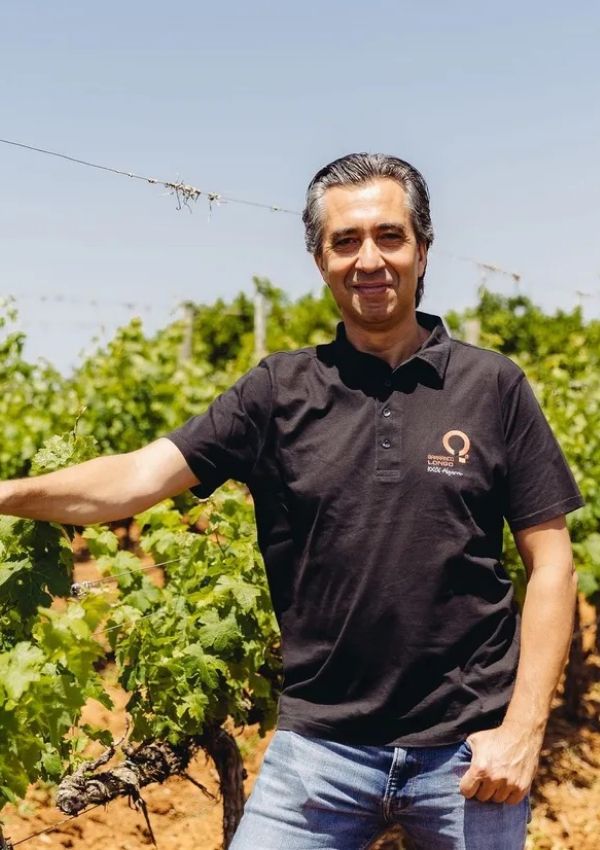
Rui Virgínia, the visionary owner and founder of Quinta Barranco Longo, a magnificent 25-year-old wine estate boasting over 100 hectares, with 27 hectares currently under vine and more planting planned in the coming years.
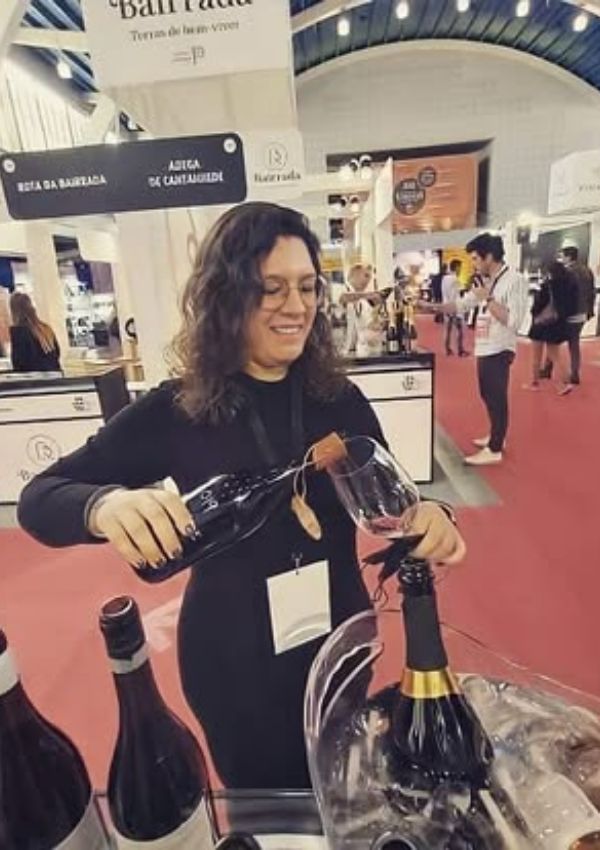
Flavia Luz, the talented winemaker and technician working alongside Rui at Barranco Longo. Flavia also graciously helped answer some of my questions and shared a few trade secrets for a successful harvest.
How does this year compare to last year?
Joaquim: “The winter was good with much-needed rain that started just after last year’s harvest and then continued all the way through January until the end of May. We experienced overall mild temperatures, but there were still difficulties due to outbreaks of powdery and downy mildew. Then, in June, we were hit with a severe heat wave which saw us through August. Overall, across Portugal, the word between industry colleagues is that there has been a significant 30% decrease in production compared to last year. However, despite these challenges, we had really good quality grapes regardless of the reduced quantity.”
Rui: “It was a great year for us! The rain we received in the winter and spring helped. Consequently, we also harvested a bit later than in previous years because of the rain. The quality, overall, was very good as well. We did see a small decrease in production compared to last year, perhaps around 10-20%, but it was almost the same. So, all things considered, it was a good year for us at Quinta Barranco Longo.”
When did you begin and end harvesting this year?
Joaquim: “We had an early harvest this year at Morgado do Quintão. We began picking on 31 July and finished by 7 September. This was partly because the grapes were ready, but also because we strategically prefer to keep our alcohol by volume (ABV) lower, and to achieve that we pick earlier than some of our neighbours. Malvasia Fina, being an early ripener, was naturally our very first grape to be harvested. At the other property I consult for, we are actually still harvesting.”
Flavia: “We started harvesting at Barranco Longo on 21 August, beginning with our white and red grapes destined for our white and refreshing rosé wines. Our red grapes are always the last to be picked, and they will be harvested around 8–9 September this year. Harvest here is made easier for us because we have a dedicated team that works with the vines and our citrus trees all year round. They are well-trained and know the vines intimately, which makes all the difference!”
Do you have problems with birds in the region eating your grapes?
Flavia: “Oh, all of the Algarve has problems with the birds! We have so many! This year, though, we decided to leave our Moscatel grapes specifically for them to devour, as they’re particularly sweet, and the birds absolutely love them. This strategy actually helped a lot in diverting them from other varietals. We also installed a sound machine that mimics the calls of the region’s indigenous predatory birds here in the Algarve, and this seems to work quite well. I only saw a few birds here and there.”
Joaquim: “We actually didn’t really have any issues with the birds this year at Morgado do Quintão.”
What grape or wines are you most excited about from this harvest?
Joaquim: “At Morgado do Quintão, I’d definitely say I’m most excited about our Negra Mole. And at Morgado do Reguengo, I’m particularly excited about our Chardonnay.”
Rui:Arinto!! It’s always Arinto.
Candace: My own experience, working at a local winery just outside of Lagos, echoed the sentiments of these dedicated professionals. August was, quite frankly, crazy! The first two weeks felt eerily, almost worryingly, slow. But then, I could literally feel the energy start to kick up around me as the winery began the meticulous process of prepping for harvest. The week before we picked was all about intense planning and managing the logistics for the following few weeks. And then it hit! Our harvest officially started on 25 August, and with wine tastings, tours, enthusiastic volunteers, and extra staff, we were absolutely humming!
We finished picking on 15 September. There’s so much hope wrapped up in this time of year, from collecting the grapes and seeing their wholeness, their healthy, firm bunches, to witnessing their miraculous evolution into the tantalising bubbling must.
By the way, it seems unanimous at my winery and others across the Algarve that the quality for 2025 is simply superb! So, here’s to another great year ahead of us, filled with delicious wines and the enduring passion of those who craft them. À Nossa!


